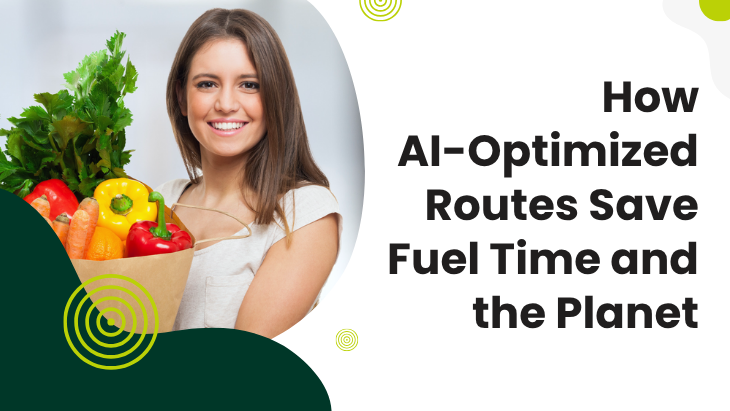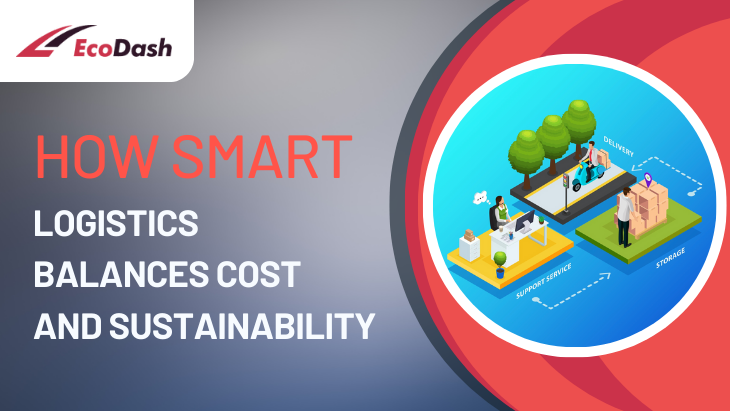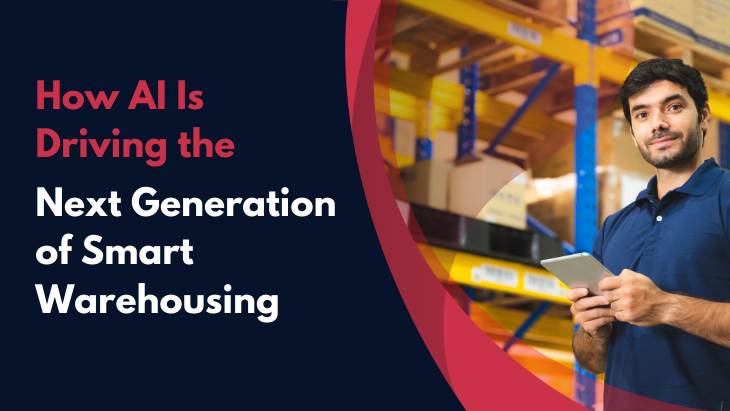With today's world of convenience, same-day grocery delivery in Canada is no longer a luxury but a norm. With increased numbers of people relying on online channels for weekly groceries, the onus is growing on delivery services to accomplish tight deadlines at low costs and low environmental footprint. Fast Grocery Delivery in Canada Fresh fruits and vegetables are expected to be delivered at the consumer's doorstep in record time, and they also expect it to be done responsibly. By AI-optimized delivery routes, grocery logistics companies are reducing fuel consumption, eliminating delays, and helping the environment.
Why Traditional Routing Stumbles
Traditional route planning techniques tend to use static maps, driver expertise, and low-end GPS systems. These methods don't take into consideration dynamic real-world situations such as traffic, weather, road works, delivery time slots, and consumer preferences. Consequently, vehicles get to travel inefficient routes, repeat routes, get stuck in traffic, or do multiple trips when a single trip could have done the trick. This results in fuel wastage, increased delivery expense, and more carbon emissions. With Canada's rapid growth in demand for quick grocery delivery, inefficiencies like these are unacceptable. This is where AI comes in to produce more intelligent, real-time routing choices.
How AI Routing Functions in Grocery Logistics
AI-optimized routing employs machine learning algorithms, real-time information, and historical delivery habits to craft the most optimal delivery routes available. Such systems take dozens of factors into account in real time traffic patterns, fuel prices, road closures, vehicle loads, customer locations, and even driver behavior. Where a vehicle might take one fixed route, AI repeatedly calculates routes based on fresh inputs. This dynamic intelligence enables delivery drivers to access numerous destinations quicker with reduced fuel and minimal wear on vehicles. AI does not merely calculate the shortest route—it calculates the most intelligent route.
Fuel Savings Through Intelligent Planning
Fuel is among the biggest cost factors in any delivery business. Artificial intelligence-based routing systems significantly reduce fuel usage by minimizing idle time and unnecessary miles. AI also identifies patterns such as which areas are served best in the morning versus the evening, making every round of deliveries more efficient. All those small incremental gains add up to substantial fuel savings over thousands of deliveries a month. This not only makes delivery cheaper for companies to operate but also helps customers by maintaining affordable delivery fees.
Accelerating Delivery Without Compromising Quality
Quick grocery delivery in Canada isn't all about speed it's about reliability. Delays damage brand loyalty, and scrambling operations open the door to faulty goods or lost orders. AI-optimized routes prevent both by allowing customers and delivery companies to achieve predictability and efficiency. By examining past delivery times and accounting for current variables, AI can precisely calculate arrival windows and make timely deliveries. This keeps perishables intact, customers satisfied, and operations on track. Speed is the result of precision, not pressure, and a new standard of reliability in the grocery delivery industry is born.
Lowering Carbon Emissions and Environmental Impact
The transportation sector ranks among the leading emitters of greenhouse gases. As the number of delivery services in Canadian cities is on the rise, the environmental contribution is becoming more pronounced. AI route optimization is the green solution. With fewer trips, consolidated deliveries, and bypassing congested roads, businesses reduce their carbon footprint considerably. Some platforms are even adding electric cars and bicycles to their fleets and employing AI to plan the most efficient routes for each. The outcome is a cleaner, greener delivery model in sync with Canada's wider sustainability aspirations and public expectations.
Real-Time Decision Making Enhances Efficiency
Among the top benefits of AI routing is that it can adjust in real time. If a traffic jam, roadblock, or weather delay suddenly develops, AI systems immediately redirect drivers to bypass disruptions. Such flexibility cannot happen with static route plans. Moreover, when a customer changes their availability or address, the system can adapt in the moment without causing the entire delivery schedule to go off rails. For same-day grocery delivery in Canada, this kind of responsiveness creates ultimate efficiency with a high level of customer service.
Time-Based Data-Driven Optimization
AI systems don't only act in the moment they learn over time. With each delivery, new data on timing, routes, delays, and customer preferences are created. This information is input back into the system, enhancing the algorithms and making subsequent route planning even more effective. AI learns over weeks and months which delivery windows are most successful, which zones to expect traffic delays, and how individual drivers handle different conditions. This collective intelligence enables companies to fine-tune operations, manage resources more effectively, and remain competitive.
Improving the Driver Experience
Behind each quick grocery delivery in Canada is a delivery driver driving through the intricacies of urban traffic and time-sensitive routes. AI isn't only assisting businesses drivers benefit too. With intelligent routing applications fueled by AI, drivers get real-time directions, delay alerts, and optimized drop-off orders. This cuts down on stress, decreases workdays, and boosts overall job satisfaction. When drivers have the top technology, they perform better and are better equipped to provide great service.
Conclusion
The future of grocery delivery is in intelligent, eco-friendly logistics. Through AI-optimized route planning, Canada's fast grocery delivery companies can realize the holy grail of achieving speed, cost-effectiveness, and sustainability all at the same time. Eco-Dash These innovations are not only better able to meet the demands of the modern digital consumer but also assist in more far-reaching objectives of climate action and operational excellence. As machine learning and real-time data integration get smarter, the delivery industry will get smarter too just one optimized route at a time.


 Cart
Cart







Leave a reply